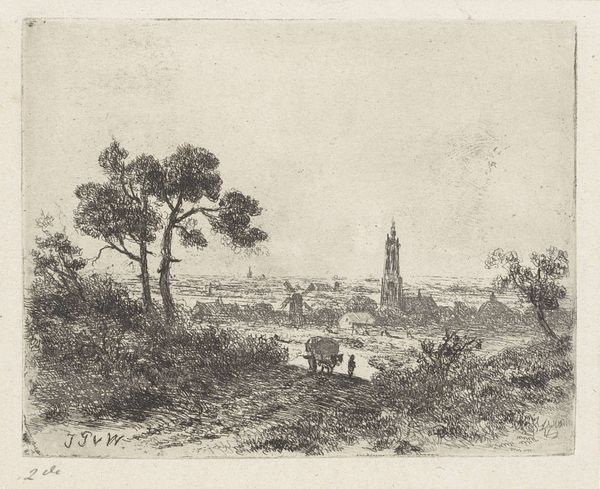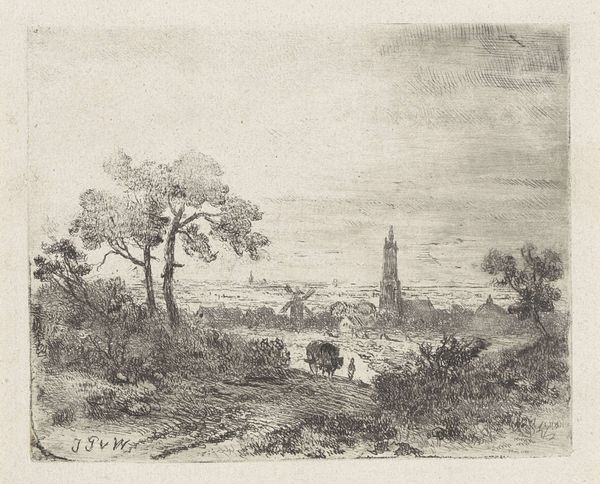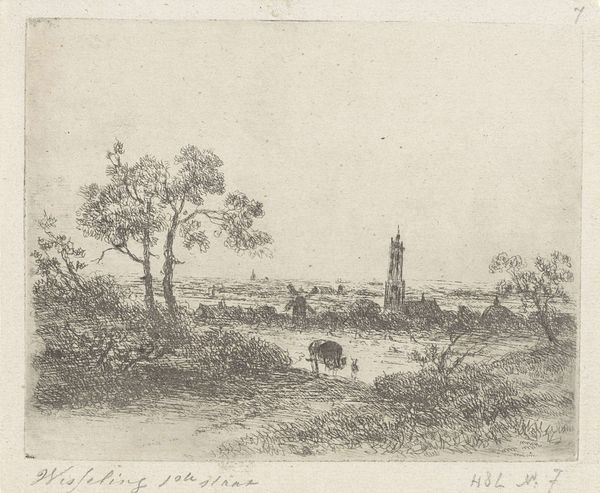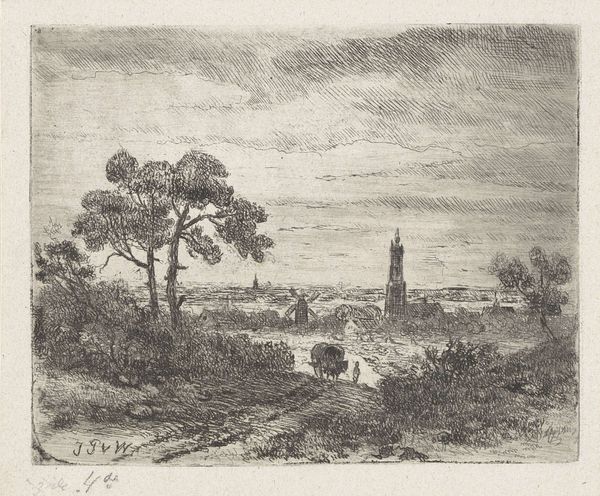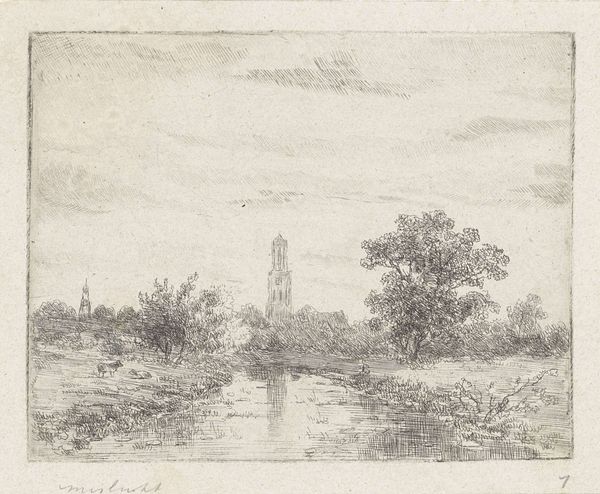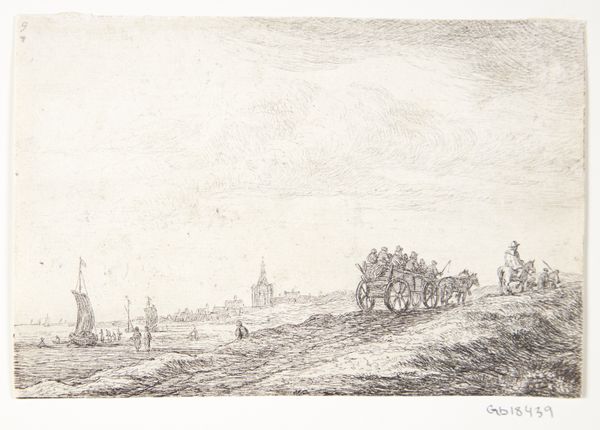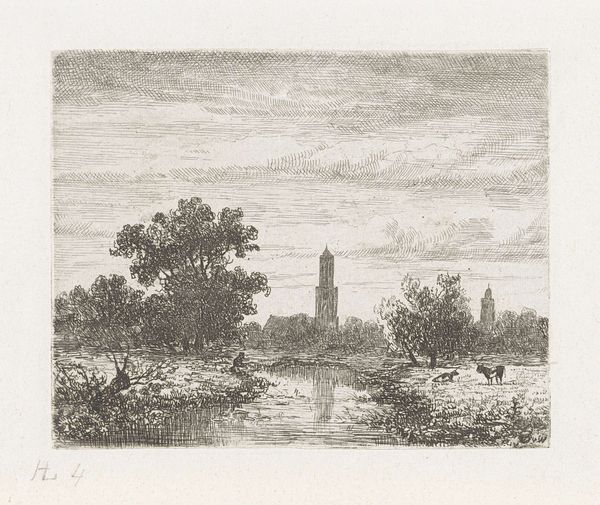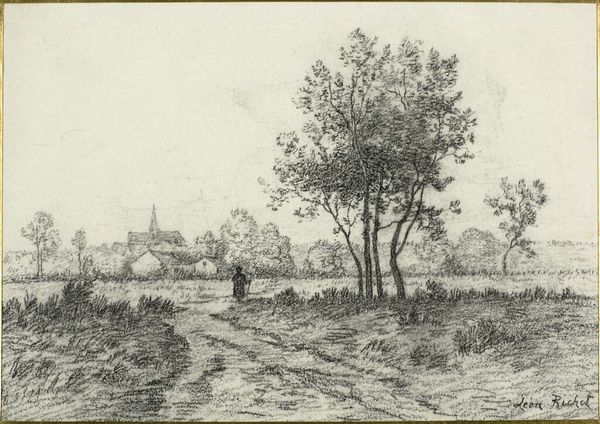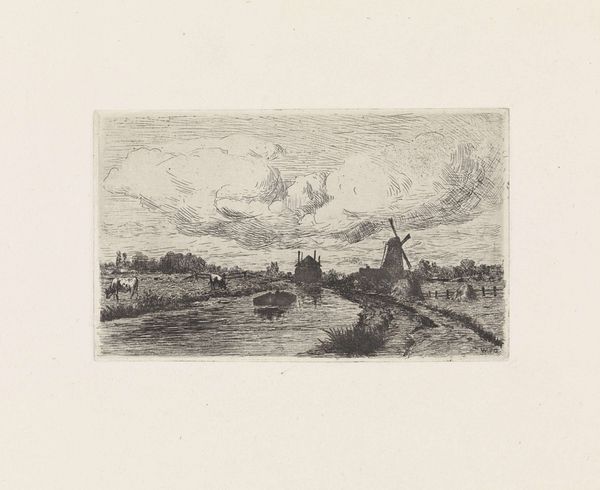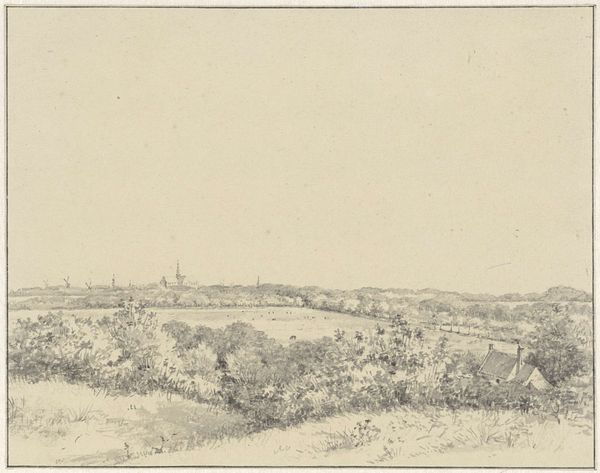
print, etching
#
dutch-golden-age
# print
#
etching
#
landscape
#
realism
Dimensions: height 98 mm, width 123 mm
Copyright: Rijks Museum: Open Domain
Johannes Pieter van Wisselingh created this etching, "View of Rhenen(?)," at an unknown date using etching. This landscape presents a seemingly idyllic scene of the Dutch countryside, but its meaning becomes richer when we consider the institutional history of landscape art in the Netherlands. During the Dutch Golden Age, landscape painting became a way for the Dutch to assert their national identity and celebrate their hard-won independence from Spain. In the 19th century, artists like van Wisselingh continued this tradition, but with a greater emphasis on realism and naturalism. By focusing on the everyday lives of rural people, artists like van Wisselingh were commenting on the social and economic changes that were transforming Dutch society at the time. To fully understand this artwork, we can consult historical maps, economic data, and social surveys from the period. Only then can we appreciate the rich layers of meaning embedded in this seemingly simple image.
Comments
No comments
Be the first to comment and join the conversation on the ultimate creative platform.
